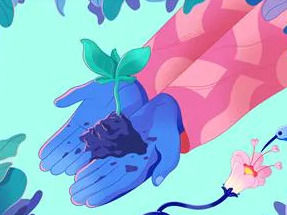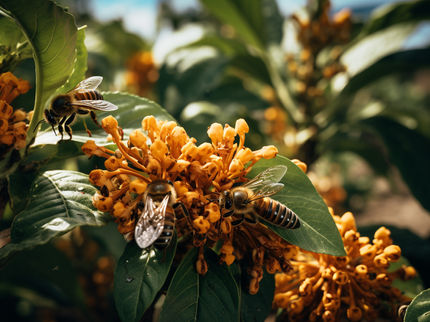Going zero – by 2030 at the latest
Advertisement
The Martin Bauer Group and all other companies in the global nature network have pledged to achieve climate neutrality. From 2030 at the latest, the global botanicals group will have no carbon footprint.

Photo by Loverna Journey on Unsplash
“Our promise applies not only to our more than 30 locations throughout the world but also to our entire supply chain,” says Anne Wedel-Klein, great-granddaughter of the company’s founder, Martin Bauer, and member of the hold-ing company’s executive board. “This means that our climate-neutral business activities will begin on the fields, where our more than 200 raw materials, such as tea, peppermint, hibiscus, chamomile and fennel grow. Around half of our emissions originate here.”
Helping to achieve a climate-neutral world
With its plan to reduce its environmental impact to zero, the Group is making a genuine contri-bution to the Paris Climate Agreement’s goal of limiting global warming to 1.5° Celsius by the end of the century.
“What makes this commitment truly special is that it involves every single person in our organi-zation: less a “mandate” from the top than a spontaneous and committed surge through the rank and file; a multi-generational, all-in push not only to do the right thing professionally, but to do that while contributing personally and factually to everyone’s, and our only planet’s, brighter future. Now, that’s empowering. And that’s power, too!”, says Ennio Ranaboldo, the CEO of Martin Bauer Group North America
Measuring, reducing and compensating
The Martin Bauer Group and the entire nature network will use the following three-pronged approach to keep its global emissions to a minimum:
1. Measure: The Group is calculating its overall corporate carbon footprint – that is, all emissions produced by its business operations, including its global supply chains. This corporate carbon footprint will be finally calculated by the end of 2021 and audited by an independent body. From 2022 onward, developments will be presented annually to make progress transparent.
2. Prevent/reduce: The top priority is to ensure that greenhouse gas emissions are pre-vented in the first place. For instance, the Group is avoiding business trips whenever digital technology suffices. To achieve its target, it is also improving energy efficiency at its production plants, implementing energy-saving programs, and promoting envi-ronmentally-friendly mobility.
3. Compensate: The Group will only compensate for greenhouse gas emissions that cannot be prevented or reduced. Most notably, it will play an active role in its own agri-cultural supply chains with innovative concepts like compost management, humus for-mation in the soil, and sustainable carbon sequestration.
Step 1: Implementation at more than 30 locations throughout the world
In a first step, the nature network is aiming to implement climate-neutral business practices at its more than 30 locations. The Group is already using green electricity from wind and solar power in offices, warehouses and production plants in Germany; all the sites throughout the world will do the same by 2025. Each site is making its own contribution towards the Group’s joint reduction target through energy-saving programs, for example, and investments in CO2-reducing technology.
Step 2: Climate-neutral in the supply chains too
Holistic appraisals of companies’ environmental impacts reveal that supply chains and primary products often play a decisive role. the nature network works with more than 400 raw material partners throughout the world and has only an indirect influence on their emissions. Neverthe-less, the Group is applying its zero-emissions target there too, with the same deadline of 2030.
That is by no means simple. Partners must be persuaded, integrated and enabled by means of a step-by-step plan. The Group will support them in first of all calculating their emissions and then identifying the most effective levers for reducing them. A joint strategy will subsequently be developed, and every effort made to support its implementation by sharing know-how and best-practice experience. Many of the raw material partners are already making good pro-gress, while others are only just beginning.
“This is precisely the change we want”
While emissions are unavoidably created in agricultural supply chains, there are also many opportunities for reducing CO2 emissions by adapting cultivation methods and management practices. Targeted crop rotation, digging plant remains into the soil, careful and targeted use of fertilizers, the planting of hedges and shade trees, and many other measures can help to re-move greenhouse gases from the atmosphere, improve biodiversity, and increase farmers’ productivity.
“With our measures in pursuit of climate neutrality, we are aiming to achieve comprehensive sustainable development that can benefit the climate and human beings. This is precisely the kind of change we want to achieve as we grow our group of companies and our supply chains,” says Gisbert Braun, Head of Group Sustainability – Social and Environment.






























































